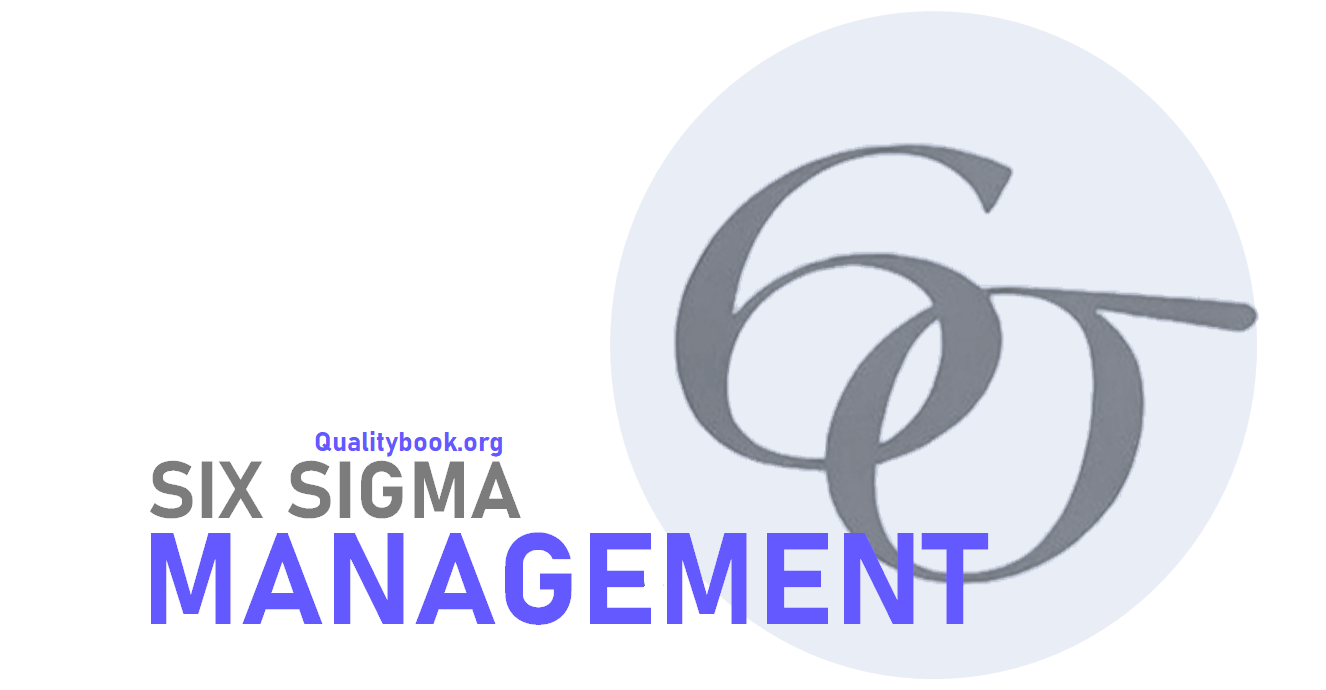6 Sigma management, as a modern total quality management based on the principle of economy. It is gradually attracting people’s attention. Understanding 6 Sigma does not require deep statistical techniques or background. In fact, what 6 Sigma can be answers in a variety of different ways.

Here we will specifically define 6 Sigma as:
- A statistical measure of process or product performance.
- Performance improvement tends to be a goal of perfection.
- A management system that can achieve continuous leadership and excellent performance.
We can distil the key elements of the 6 Sigma into six themes. These principles may be useful in a variety of ways 6 Supported by Sigma tools and methods. Here, we will combine our practice and make a brief explanation of the traditional Total Quality Management (TQM).
Theme 1: Truly focus on customers.
Although total quality management also places a strong emphasis on customer centricity (or focus). Many companies that already have TQM experience are implementing it 6 Sigma is often horrified to find that he really understands very little about customers.
In the 6 Sigma, the focus of customer attention is the most important. For example, to 6 measurement of Sigma’s performance starts with the customer and determines. The 6 Sigma through the analysis of the SIPOC (Supplier, Input, Process, Output, Customer) model Project. Therefore, 6 Sigma improvements and designs are determined by the impact on customer satisfaction. The 6 Sigma management is more genuinely focusing on customers than TQM.
Topic 2: Data and fact-driven management
6 Sigma takes the concept of data and fact-based management to a new and more powerful level. Although total quality management may invest a lot of attention in improving information systems, knowledge management, etc.
Many business decisions are still based on subjective concepts and assumptions. 6 Sigma principle starts by identifying what metrics are key to measuring business performance. Then collecting data and analyzing key variables. This is when the problem can be discovered, analyzed, and solved more effectively – permanently.
To put it more practically, 6 Sigma helps managers answer two important questions:
Supporting data-based decisions and solutions.
- What data/information do I really need?
- How can we use this data/information to maximize benefits?
Theme 3: Measures taken should be process oriented.
Whether focusing on the design of products and services. The measurement of performance, efficiency and customer satisfaction, or business operations, 6 Sigma sees process as a key vehicle for success. One of the most significant breakthroughs in Sigma’s activities has convinced leaders and managers.
Especially in the service sector and the service industry. That process is the way to build value delivery to customers. Although total quality management requires whole-process management, it lacks focus.
Theme 4: Preventive management
Quite simply, prevention means acting before an event occurs, not reacting after the fact. At in 6 Sigma management, preventive management means developing habits about often overlooked business activities: Setting ambitious goals and reviewing them frequently, setting clear priorities, focusing on problem prevention rather than remedy after the fact, asking why things are done rather than blindly following them because of conventions.
Truly preventive management is the starting point for creative and effective change, never boring or overly analytical. 6 Sigma, as we will see, will use a combination of tools and methods to replace passive management habits with a dynamic, proactive, preventive management style.
Theme 5: Borderless cooperation
Borderless is one of the slogans of former GE CEO Jack Welch’s business success. In the implementation of Before 6 Sigma, GE’s presidents had been working to break down barriers, but the results still did not satisfy Jack Welch.
6 The implementation of Sigma strengthens top-down, bottom-up and cross-departmental teamwork, improves collaboration within the company and works with suppliers and customers, and there are many opportunities for such collaboration. Billions of dollars are wasted every day on lack of communication and competition between organizations that share a common goal: To provide value to customers.
Theme 6: Strive for perfection; Tolerance for failure.
How can you tolerate failure while striving for perfection? In essence, the two aspects are complementary. No company can come close to 6 without pushing new ideas and approaches Sigma levels, while new ideas and approaches usually include some risks. If people see a possible way to approach perfection, but are too afraid of the mistakes that follow, they will never try.
Fortunately, the performance improvement techniques we’ll discuss include a large number of risk management methods, so the scope for setbacks or failures is limited. Although each starts with 6 Companies that target Sigma must strive to achieve perfect financial results but should also be able to accept and manage occasional setbacks. These theories and practices enable the goal of zero defects and optimal efficiency that Total Quality Management has always pursued.
6 Sigma management is a gradual process that starts with a dream or a vision, approaching the goal of perfect products and services and extremely high customer satisfaction. This injects new impetus into the traditional total quality management and makes relying on quality to achieve benefits a reality.